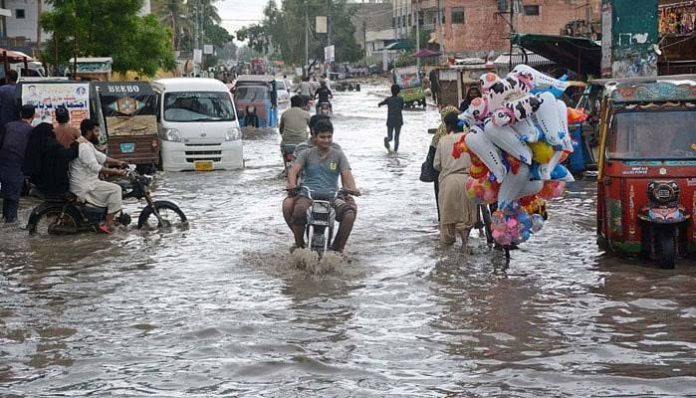Karachi was battered by relentless monsoon downpours, triggering severe urban flooding that brought daily routines to a standstill across the city. Countless main roads and inner lanes were submerged, making movement virtually impossible.
The havoc extended to crippling traffic gridlock, widespread power outages, and visible damage to both public infrastructure and private property. Nearly half of the city plunged into darkness as dozens of power feeders tripped.

Rescue personnel and municipal teams sprang into action, working non-stop amid rising water levels that invaded homes, shops, and marketplaces in low-lying zones.
Many residents were forced to abandon their homes temporarily, while shopkeepers suffered financial losses as precious goods were ruined by floodwaters.
Commuters bore the brunt, with stalled vehicles littering waterlogged roads and public transport largely non-functional, leaving workers and students stranded for hours.
Authorities declared a rain emergency and imposed a public holiday, urging citizens to stay indoors amid forecasts of more rain through at least August 22, raising fears of worsening floods.
The crisis spotlighted Karachi’s inadequate drainage; clogged storm drains and poor maintenance once again allowed water to accumulate rapidly, fueling frustration and demands for long-term solutions.















